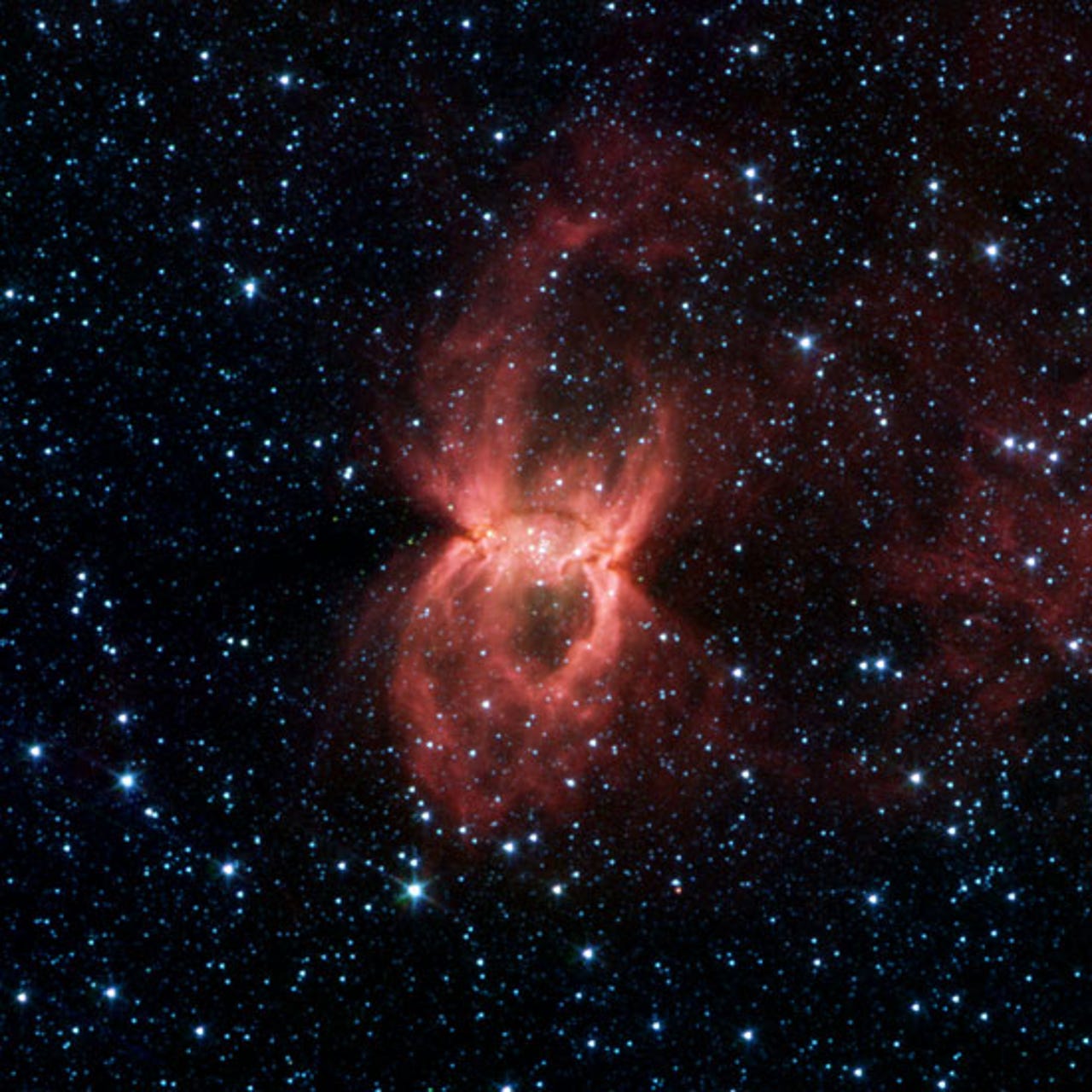Images: Where stars are born

infrared mountain
This infrared image from NASA's Spitzer Space Telescope is called "Mountains of Creation," pillars of cosmic dust where stars are born. These mountains of cool gas and dust are illuminated at their tips with light from new stars. Scientists believe that the pillars were formed by one massive star and will eventually become dense enough to form a new generation of stars.
invisible cosmic dust
The inset image is what can be seen by visible light, and the main image is from infrared. The reason? Infrared light can travel through dust, while visible light is blocked by it. Second, the mountain dust has been warmed by stars and consequently glows in infrared light, where Spitzer can see it.
Eagle Nebula
NASA's "Pillars of Creation" captures columns of cool hyrdrogen gas and dust which are incubators of new stars. The Hubble Space Telescope took this image of the Eagle Nebula, 6,500 light years away from Earth in the constellation Serpens.
NGC 346 cluster
The NGC 346 cluster is a fertile location for the birth of new stars. It's located 210,000 light years away in the Small Magnetic Cloud, a Milky Way satellite galaxy. This Hubble photo shows an area that contains dozens of hot, blue, high-mass young stars.

Black Widow
Previous observations saw only a faint hourglass-shaped patch of obscuring dust and gas, but NASA's Spitzer telescope is able to see the big Black Widow Nebula teeming with clusters of massive young stars.
Tadpole Galaxy
The Tadpole Galaxy is a blast from the past--425 million light years away and located in the constellation Draco. Scientists will use this detailed image to help understand the nature of the "faint red-orange specks" of the early universe.
first stars
The top image, from NASA's Spitzer telescope, shows newborn stars in the constellation Draco. The bottom panel shows infrared background light after all stars, galaxies and artifacts were removed. This could be the glow from the first stars of the universe.